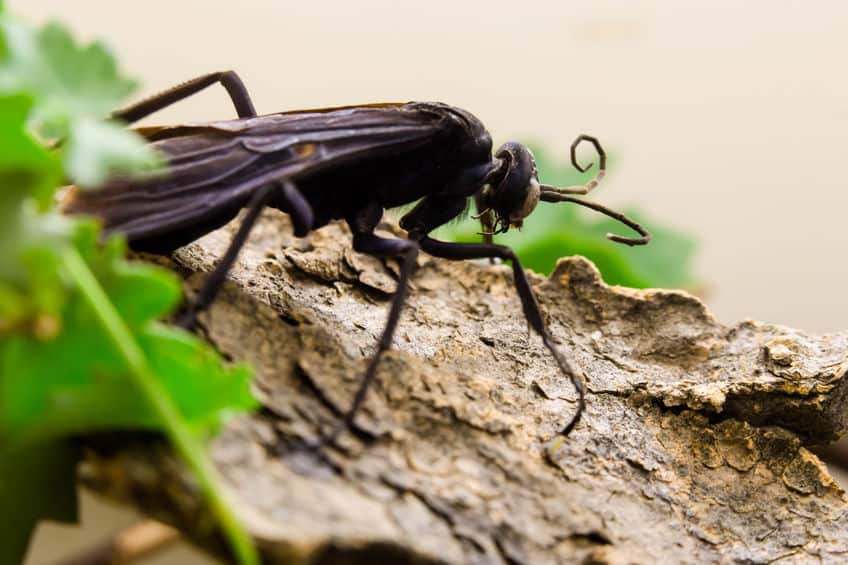Tarantula hawks are a group of massive wasps found worldwide in arid places. Though the adults feed mainly on nectar, the larvae have one of the most extreme diets in the entire animal kingdom. They feed on still-living tarantulas that have been captured by the parents and imprisoned in a burrow, a feat requiring some incredible feats of strength and agility.
Paralytic Venom
The venom of a tarantula hawk is a chemical cocktail designed to perfectly paralyze arachnids, leaving them alive but completely helpless for the several weeks it takes the larvae to feed on it. Once the sting is delivered the tarantula stops moving within seconds, allowing the tarantula hawk to pull the hapless spider back to its lair.
Powerful Sting
The tarantula hawk has one of the most painful stings in the insect kingdom, delivered with an enormous (up to 7mm) stinger. The Schmidt Pain Index, a scale that measures how painful insect stings are, rates the tarantula hawk as second only to the bullet ant. It is described as feeling like an electric shock and incapacitates the person stung with blinding pain, though fortunately the pain only lasts for five minutes or so. This sting, provided it does not cause an allergic reaction, is not dangerous to humans.

Wrestling Master
In order to deliver a sting between the legs of a tarantula the tarantula hawk must be able to subdue the spider without getting hurt. Tarantulas are large, strong, venomous, and quick, meaning that the tarantula hawk must be larger, stronger, and faster. As a result they are very strong and fast insects with long, hooked claws meant to grapple with tarantulas and allow them to deliver their paralytic venom. Once the tarantula hawk has paralyzed a tarantula it must then drag it back to the burrow, requiring even more strength and stamina.
Warning Colors
Tarantula hawks are large, animated insects that are quite loud. They are always on the move and move quickly with jerky motions and large amounts of wing movement and because of this they certainly draw attention wherever they go. Not many animals bother them, however, because they have evolved a way to discourage any would-be predators from trying to eat them. They have a stunning black-blue body and orange wings that is, in essence, a warning to every creature who lays eyes on it. This colorful appearance is meant to teach predators that any attempt at predation will be met with a formidable sting and thick armor, making for a very poor meal.
Armor
The fangs of a tarantula are powerful, capable of inflicting serious damage on insects and humans alike. In order to avoid bites the tarantula hawk is clad in a rock-hard exoskeleton that is extremely resistant to piercing. In fact, entomology students who are trying to prepare tarantula hawk specimens often have an extremely difficult time attempting to push pins through this exoskeleton, often resorting to using a hammer. In the desert ecosystem these species live in, this armor serves double duty as an excellent way to prevent water loss.
